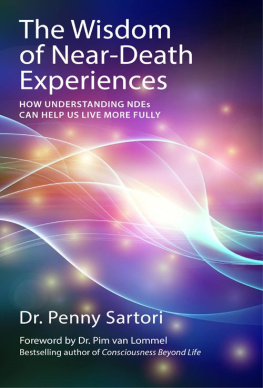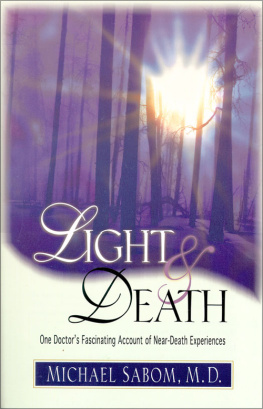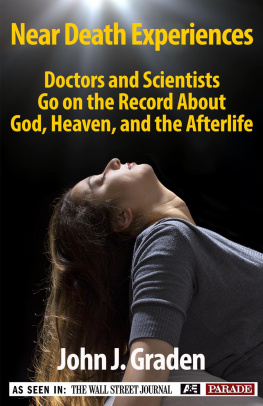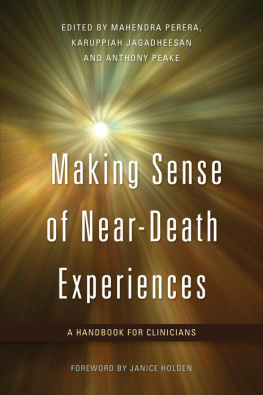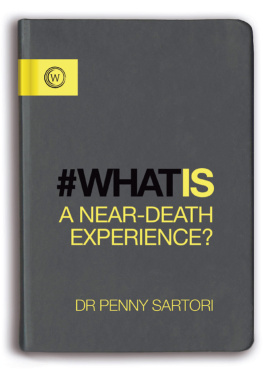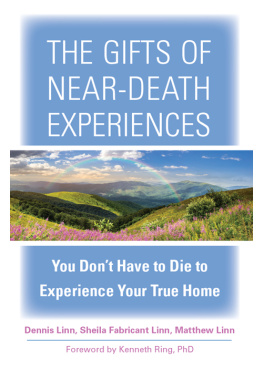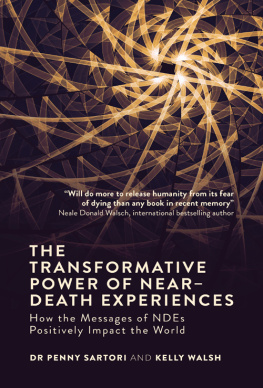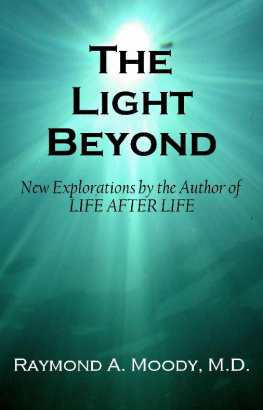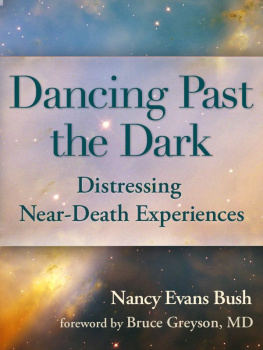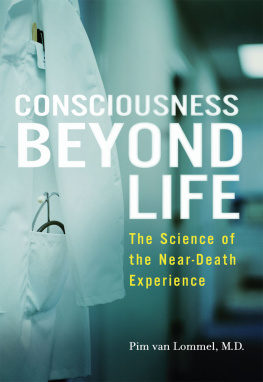The Wisdom of Near-Death Experiences
HOW UNDERSTANDING NDEs CAN HELP US LIVE MORE FULLY
Penny Sartori PhD RGN
Dedicated to Nanna Beryl 19272009, my husband Enrico, my brother Julian and his civil partner Christopher and the spring and summer that we all shared in 2009. It was a true gift.
You wont want to miss this exceptional book! Dr Sartori is uniquely qualified. She conducted one of the most important prospective near-death experience studies ever reported. As a nurse she works daily with dying patients. This book is scholarly in content, yet easy and delightful to read. This highly recommended book contains a treasure trove of wisdom that is powerful, inspiring, and could change your life.
Jeffrey Long, MD, author of the New York Times bestselling Evidence of the Afterlife: The Science of Near-Death Experiences
With more than twenty years experience of nursing dying people in an intensive therapy unit, plus a PhD in Near-death Experiences, Dr Sartori is very well qualified to discuss issues of death and dying. She believes that NDEs provide us with a greater understanding of the dying process and that care of terminally ill patients could be enhanced if NDEs would more widely studied. A greater acceptance of the inevitability of death would help the situation of terminally ill people. At present they are increasingly exposed to invasive and burdensome treatments even when prospects for recovery are recognised as minimal. This book is an immensely valuable contribution to current debates about patient care.
Professor Paul Badham, Professor Emeritus of Theology and Religious Studies at the University of Wales, Trinity St David
Nurse Penny Sartori was driven by an experience with a traumatized dying patient to study near-death experiences, not to pursue what might happen in an afterlife but rather to improve what happens in this life. Her goal was to learn all she could about the dying process in order to help her patients find meaning in their illness and restore a sense of well-being in their lives. The Wisdom of Near-Death Experiences, the fruit of her labors, is an invaluable resource for health care workers, for dying patients and their families, and for all of us who will face death eventually.
Professor Bruce Greyson, MD, Carlson Professor of Psychiatry & Neurobehavioral Sciences, Charlottesville, Virginia
Dr Sartori has masterfully crafted a comprehensive summary of research on near-death and related experiences that is both accessible to the interested public and informative for many healthcare professionals. This work has the power to remind people of their purpose in living and to provoke a revolution in the more humane treatment of the dying.
Janice Holden, EdD, LPC-S, LMFT, NCC, Chair, Department of Counseling and Higher Education and Professor, Counseling Program, College of Education, University of North Texas
Also by Penny Sartori
The Near-Death Experiences of Hospitalized Intensive-Care Patients: A Five-Year Clinical Study
The greatest thanks of all go to all of the patients I have nursed throughout my career, especially the one whose death motivated me to learn more about death, and to the near-death experiencers (NDErs) who have contacted me over the years. A big thank you to all of you who have so graciously given up your time for me to interview you and then allowed me to describe your experience in this book. You have all been my greatest teachers.
Note
Most of the examples that I have used in this book are from people who have written to me or emailed me over the years. Although everyone gave their permission for me to use their stories, many of the people preferred to be anonymous and this has been respected.
Where I have drawn on examples that I encountered during my nursing career, these are all actual events that occurred but some details and names have been changed to ensure the patients cannot be identified.
Foreword
In this well-written and open-hearted book Penny Sartori describes how near-death experiences (NDEs) can have a great impact for our healthcare system as well as for our death-denying and materialistic society. By doing research into NDE and being able to listen with an open mind to critically ill and dying patients in the intensive-care unit she totally changed her ideas about life and death, a change that specifically started after her encounter with a dying patient.
Unfortunately for their patients, the majority of healthcare workers still apparently do not have enough knowledge about NDEs and recent NDE research. I know from many personal accounts that an NDE, or an experience of enhanced consciousness during a life-threatening medical crisis, still gives rise to many unbelieving and critical questions, because within our Western culture this experience is completely at odds with conventional wisdom. As long as one has not experienced an NDE themself it seems impossible to really understand the impact and the life-changing after-effects of this overwhelming experience. So, of course, an NDE is still an incomprehensible and unknown phenomenon for most physicians, psychologists, and for patients and their family. How could it scientifically be explained that people can have clear memories of a period of obvious unconsciousness? Or how is it possible that permanent life changes occur after a cardiac arrest of several minutes duration? An NDE seems to be an unforgettable confrontation with unlimited dimensions in our consciousness. The existing worldview has radically changed: It felt as if I had become another person but with the same identity. So it seems obvious that in our Western world a near-death experience cannot only be defined as a medical but also as a psychological or spiritual crisis.
In the past a lot has been written about special or altered states of consciousness. But surprisingly, many people and many healthcare practitioners nowadays still have never heard of or read about NDEs, nor about the life-changing effects of this experience. One has to realize that according to our current medical concepts it is not possible to experience consciousness during a cardiac arrest, when circulation and breathing have ceased, during a deep coma with a severely disturbed EEG, or during a life-threatening crisis in the end stage of cancer. However, during the period of unconsciousness associated with cardiac arrest or coma, patients may report the paradoxical occurrence of enhanced consciousness experienced in a realm without our conventional constraints of time and space, with cognitive functions, with emotions, with self-identity, with memories from early childhood and sometimes with perception from a position out and above the lifeless body. Since the publication of the book Life after Life by Raymond Moody these extraordinary conscious experiences are called near-death experiences. Such an NDE can be defined as the reported memory of a range of impressions during a special state of enhanced consciousness, including a number of universal elements such as an out-of-body experience, pleasant feelings, seeing a tunnel, a light, deceased relatives, a life review or the conscious return into the body. NDEs are reported during many different types of circumstances: cardiac arrest (clinical death), shock after loss of blood (childbirth), coma following traumatic brain injury or stroke, near-drowning (children) or asphyxia, but also in serious diseases that are not immediately life-threatening, during depression (existential crisis), isolation, meditation (enlightening experience or experience of oneness), during imminent traffic accidents (fear-death experience), during the terminal stage of illness (end-of-life experience), or sometimes without any obvious reason at all. The NDE is transformational, always causing profound changes of life-insight, enhanced intuitive sensibility and the loss of fear of death. Near-death experiences occur with increasing frequency because of improved survival rates resulting from modern techniques of resuscitation, and from better treatment of life-threatening diseases.

